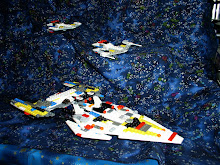The last two weeks I’ve talked about your keyboard. There’s another little device on your desk that’s likely overlooked in its simple, but powerful, usage. Your mouse is a strong partner with your keyboard in the functioning of your computer.
Most mice come in a formula that hasn’t really changed in nearly forty years. A small rounded box that slides across your desk, with a ball that rolls or a laser (either red or infrared being invisible to the human eye) and they can also be wired or wireless, just like a keyboard. There are usually at least two buttons, and sometimes a scroll wheel. And, like keyboards, there are some mice armed with a plethora of buttons. Mostly they are for volume and media controls, but I find the Back and Forward buttons for use in Internet Explorer and Firefox to be most handy. And, like the keyboards, the two most popular makers are Microsoft and Logitech.
The left button tells the computer that you want to perform an action, such as opening a program, selecting an item, and highlighting text for example. Opening a program usually requires two clicks on the left button to start that process. Selecting an icon or file is one click. And highlighting is a sort of arcane art where you hold down the left button and drag the mouse to highlight the desired objects (files and icons).
The right button tells you the actions you can perform with the objects on your screen. Pressing the right mouse button will bring what is called the “context sensitive menu.” In this menu, you will notice that many items there duplicate items we have seen before in the first issue about keyboard shortcuts. Paste, Copy, and Cut are always present, the rest change according to where you right-click. If you right-click on the desktop in an empty area, you will be able to access the Arrange Items (arranges the icons on the desktop) menu, Refresh (adjusts for any changes made), New (allow you to create new folders, shortcuts and new files from various programs), and Properties (changes to display settings such as wallpaper, power, Windows themes) items.
If you right click on an icon, you will find that the menu changes and the Properties there allow you to change the name of the icon such that if “Microsoft Office 2003 Word” is too long, you can make it simply “Word” by selecting Rename from the menu.
One of my favorite features of Windows XP (Home or Professional) is the ability to put notes to your digital photos. You can do this by right clicking on the file and selecting Properties. Then left click on the Summary tab. At the bottom of that tab there is a large area called Comments. In here you can put names, dates, places and other information that is relevant to the photo. You can also do this with files from Word. I’ve found it to be very useful when relatives from outside the state visit and I can ask them questions about the photos we are looking at from the 20’s, 30’s, and 40’s.


No comments:
Post a Comment